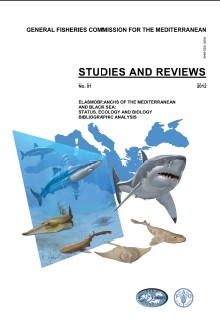Mediterranean and Black Sea sharks risk extinction
News Release
Food and Agriculture Organization of the United Nations (FAO)
14. March 2013
———————–
“Serious implications” feared for marine ecosystems and beyond
 14 March 2013, Rome – Shark populations in the Mediterranean and Black Sea have dropped dramatically over the last two centuries and now risk extinction, with serious implications for the region’s entire marine ecosystem and food chains, according to a new FAO study.
14 March 2013, Rome – Shark populations in the Mediterranean and Black Sea have dropped dramatically over the last two centuries and now risk extinction, with serious implications for the region’s entire marine ecosystem and food chains, according to a new FAO study.
“Sharks in the Mediterranean Sea have declined by more than 97 percent in number and ‘catch weight’ over the last 200 years. They risk extinction if current fishing pressure continues,” the study found.
In the Black Sea, although information is scarce, catches of the main shark species have also declined to about half of catches in the early 1990s.
“This loss of top predators could hold serious implications for the entire marine ecosystem, greatly affecting food webs throughout this region,” it added.
The study, Elasmobranchs of the Mediterranean and Black Sea: Status, Ecology and Biology, was undertaken by the General Fisheries Commission for the Mediterranean, one of several FAO regional bodies working in the fisheries sector.
Critically endangered
It found that cartilaginous fish species, such as sharks and rays, “are by far the most endangered group of marine fish in the Mediterranean and Black sea where 85 species are known to occur. Of 71 species assessed in the Mediterranean Sea in 2007, 30 (42 percent) were found to be threatened, including 13 percent critically endangered, 11 percent endangered and 13 percent vulnerable. Another 18 percent were categorized as near-threatened.
Cartilaginous fish have skeletons made of cartilage, rather than bones. Within that group, sharks, rays and skates are scientifically termed Elasmobranchs. Their biological characteristics, including low fecundity, late maturity and slow growth make them more vulnerable than bony fish, as their regeneration rates are slower.
Issues such as “overfishing, wide use of non-selective fishing practices and habitat degradation” are therefore affecting these species more than others.
In general sharks and rays have not been deliberately targeted in the Mediterranean and Black Sea, but caught accidentally. Annual aggregated reported landings in the Mediterranean and Black Sea currently amount to some 7 000 tonnes, compared to 25 000 tonnes in 1985 – an indication of the severity of their decline.
At the same time, however fishing activities targeting sharks are intensifying due to rapidly increasing demand for shark fins, meat and cartilage.
Habitat disturbance
This is compounded by extensive damage to, or disturbance of, their habitats, caused by shipping, underwater construction and mining or by chemical, sound and electromagnetic contamination.
Among the most recent measures adopted by the Commission to protect sharks and rays is the prohibition of ‘finning’ (removal of fins at sea and discarding of carcass) and the reduction of trawl fishing within 3 nautical miles off the coast to enhance protection of coastal sharks.
The Commission has also recommended Mediterranean and Black Sea countries to invest in scientific research programmes aimed at identifying potential nursery areas and to consider time and area closures to protect juveniles of sharks and rays from fishing activities.
Other initiatives undertaken by the Commission have included the organization of several meetings and courses aimed at better understanding these species and their habitats and creating a background of Regional knowledge to guide GFCM Members in developing national plans to protect these key species.
Source: FAO
